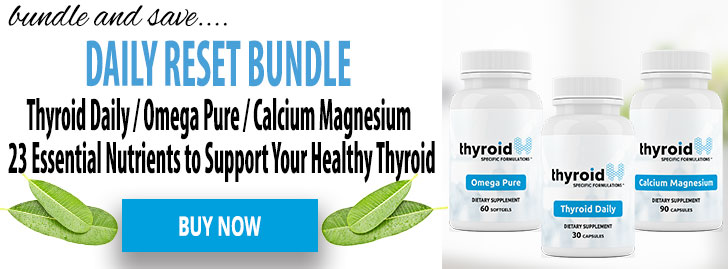Do you know how to test for toxins or chemicals in your body? Environmental toxicants are one of the biggest controllable factors behind chronic diseases in the modern world. This idea used to be very “alternative,” but now it is well-accepted in all circles. I love being able to see clear results. Here is what I have learned about testing for toxicants and how to measure toxicity in the body.
- Have any questions?
- 480-631-7837
- support@in-goodhealth.com

Update – Supplements To Take For Hashimoto’s
May 9, 2019
Is Your Thyroid Still Working?
May 27, 2019
Update – Supplements To Take For Hashimoto’s
May 9, 2019
Is Your Thyroid Still Working?
May 27, 2019Product Recommendation: Toxins can make weight loss more difficult because they are stored in fat. Thyroid Weight Loss Bundle is a great starting point for those who are struggling with stubborn weight and unexpected weight gain. Click Here
Toxin or Toxicant
When we talk about various harmful environmental chemicals, the term toxicant is more correct. I keep trying to train myself not to use the word toxin because, as one of my editors taught me, a toxin is a poison found in a living thing (like snake venom). Whereas a toxicant is a synthetic chemical.
Overall, this idea of being “intoxicated” has left us with a vague sense of being unclean or contaminated. Luckily, it is also behind the valid desire to detox and cleanse the body!
Risks of Toxicants
There are many different risks when it comes to toxicants and testing for toxins in the body. Some of the initial symptoms that we might be able to see are:
- Weight gain
- Autoimmunity
- Brain fog
- Digestive issues
- Nerve tremors
- Skin Symptoms
- Fatigue
- Muscle pain
Beyond this, though, are disease concerns from environmental toxicants. These are far more serious, and can include the following:
- Cancer
- Alzheimer’s disease
- Diabetes
- Heart disease
- Fatty liver
- Neuropathy
What this Means: The effects of toxicants can be numerous, from short-term symptoms to long-term diseases. They are serious, so we need to know how to test for toxins in the body.
How Do You Know If A Detox Worked?
Let me tell you a story about myself. As a college student, I became very health-conscious. I lapsed on the habits I had developed during my junior and senior years of high school; eating carefully and exercising became less important.
To no one’s surprise, I quickly started gaining weight and feeling miserable. During college, I became conscientious.
Like most college students, I was also paying for my food for the very first time. Three unique factors came together for me, trying:
- Not to spend too much
- To get enough protein
- To find the time to cook
The collection of these factors led me to eat a whole lot of canned tuna – and I mean a lot. For several years, I ate at least one can of tuna every day (and often several cans).
In The Early 90’s…
I eventually became concerned about mercury toxicity and started learning more about it. Along with my ridiculous history of tuna intake, I had over a dozen mercury fillings as a child.
When I finally was able to start testing myself, my mercury levels were off the charts. Interestingly that I did not even realize the ongoing symptoms that I was living with. That is until it went away as I detoxed from mercury. With each step, my mind became more stable – and it was wonderful.
Key Insight: We often cannot recognize the symptoms that we are living with, until we do a proper detox and get to start feeling better.
I have always been a fan of having clear information and good data. After all, the path back to good health can be nearly impossible if you do not know what you are trying to achieve and whether you are progressing toward it.
How Do You Know if You are Carrying Toxicants in Your Body?
It’s all about testing and not guessing! Two main categories of tests are “direct tests” and “indirect tests.”
- Direct Tests – these tests measure the level of toxicants in your body.
- Indirect Tests – these tests look for clues that toxicants may be present.
Section Summary: In all circumstances, direct tests would be ideal for discovering more about your system’s potential toxicants. Some toxicants, though, are harder to measure than others. That is why indirect tests can benefit you and your health.
How to Test Your Body for Toxicants
Now that we have a better understanding of how toxicants can affect us, let’s explore some of the most popular tests. Remember, this is a comprehensive guide, so we will cover all sorts of tests.
Afterward, we will go into the steps you can take to rid your body of these toxicants today.
Liver Enzyme Tests
If they are on the high side of the normal range, this can be a clue to the presence of environmental toxicants (Read: Fatty Liver Disease).
Organic Acids Tests
Organic acid tests measure various metabolic byproducts. This includes those made from the stress of environmental toxicants in our bodies. The good thing about these tests is that they are not invasive; rather they are commonly measured through urine.
The drawbacks are large, though, because they can be quite vague. Toxicants can play a role in organic acid changes, but so many other factors can also cause the same changes.
Therefore, you cannot be certain that toxicants were the problem – a problem in and of itself. The other problem is that they do not identify levels of any specific toxicants. This makes it harder in terms of trying to identify what to avoid or what to address.
Hair Tests
These kinds of tests have been around for several decades. I see them less commonly than I did in the past, but they are still in use.
They are still in use because they are low-cost, noninvasive, and easy to do at home. Unfortunately, they are not particularly accurate.
Hair tests can be used as a tool to measure for toxic heavy metals, such as:
- Aluminum
- Arsenic
- Antimony
- Cadmium
- Lead
- Mercury
- Nickel
- Uranium
- Strontium

They have also been used in studies that survey exposure to various toxins within a population. As it happens, tests that are not accurate enough for individuals can still be used for populations. The random variances from one reading to the next may average themselves out.
That is fine if you are only concerned about how much of a toxic burden the population is under, and you are not concerned about the individual. For our purposes, though, it is not a useful way to screen a single person.
Hair tests can also be influenced by ethnic differences, hair color, and hair treatments. Hair tests also measure levels of essential minerals like calcium, magnesium, or zinc.
However, the amount of minerals in the hair does not consistently correlate with the amount found in the body.
Serum Blood Tests
There are different types of blood tests. Blood contains watery serum, which contains nutrients to feed the cells, as well as blood cells (like white and red blood cells and platelets).
Key Insight: Toxicants have the potential to circulate in the serum and they can be attached to the blood cells. When we go with blood tests, we have the unique opportunity to measure both.
Serum tests are the most commonly used for toxins. In most cases, when a doctor does a blood test for toxins, they are testing serum tests.
The advantage of them is that they are the easiest. Most laboratories can run them, and they are covered through insurance. Most laboratories can also process them rather quickly.
Drawbacks of Serum Blood Tests
The drawback is that serum tests only show exposure from the last several days. The most harmful toxicants do not stay in the serum for long periods. Instead, they migrate into more vital body parts (such as the brain or the organs).

Section Summary: Serum tests help determine whether someone is exposed to certain toxicants daily. If someone has high levels of lead while being tested during the workweek and less before the week begins, then we know that the workplace is the culprit.
Regarding tests, we often think of false negatives and positives. Serum tests have high rates of false negatives. This means the test may look fine, even if you have a problem.
Having said that, there are a high number of people who have abnormal serum levels of lead. Estimates have stated that 30% of the population may have unsafe lead levels in their drinking water.
Section Summary: In most cases, when one wants to test for toxicants, they do not just want to know the short-term implications. They want to understand how much has built up in their bodies, often throughout a lifetime.
Red Blood Cells
The red blood cells may also be used to test for toxins, as can whole blood tests, including the serum and the blood cells.
These tests are ultimately better because they show an average level found over roughly three months rather than three days.
Key Insight: A big plus for red blood cell tests is that they also show the level of mini nutritional minerals and this data is both accurate and helpful.
These tests are also convenient because they are blood tests that can be done simultaneously. They are less likely to be covered by insurance and can only measure fewer toxic metals (typically cadmium, lead, mercury, and arsenic).
A big drawback of these tests is that many of these toxicants are not prone to binding to red blood cells. Even if someone has a large amount in their body, it may not look as bad as reality.
Accuchem
Because this is a comprehensive guide, I should mention Accuchem Labs. Their tests are no longer available, but it is worth sharing my experience with them because it gives insights into the prevalence of chemical exposure and how difficult it can be to test for.
Accuchem offered tests for nearly any metal, pesticide, plastic, or solvent imaginable. They were also tested through serum, urine or fat biopsy.
Since many chemicals are resistant to being in the serum and end up in the fat, this may be one of the more accurate ways to test. However, it is impractical and no longer readily available.
In the mid-90s, a group of doctors and I tried to see if we could do a prolonged fast (36 hours) to make serum tests more useful.
The idea was that if you fast for long periods of time, the substance could move out of the fat and into the bloodstream. We tested after prolonged fasting and compared the results to those from fat biopsies.
Even with 36 hours of fasting, the serum test was unhelpful. Many of us, who were healthy and conscientious about chemicals, had surprise levels of toxicants in our biopsies.
Urine Tests
Urine can also be used to measure for toxins, and there are two main ways to do this: with or without provocation. Provocation means a substance is given to push chemicals out of the body.
Without provocation, urine tests have the same limitations as serum tests. They will only show what someone is exposed to at the time of the test.
Key Insight: With provocation urine tests have the potential of showing exposure from the distant past, which can give us a better understanding of the toxicants in our body now and in the recent past.
Mercury Speciation Testing
Different forms of mercury are found in inorganic sources. One laboratory, Quicksilver Scientific, has the technology to break down mercury into inorganic or methylmercury.
This option may be helpful for someone who is not clear as to their source of mercury. The only drawback is that this test only measures for mercury and is less cost-effective.
There is a lot of controversy surrounding these tests, for reasons that have nothing to do with their legitimacy or accuracy. The reference ranges that most labs use ranges more appropriate for unprovoked results.
There also have been practitioners who have used very high doses of provocation with people for screening purposes.
In this scenario, nearly anyone will appear to have a burden of toxicants high in the green range or early in the yellow range. However, toxicologists know that challenge testing is a legitimate tool when the right amount of challenge agents are used and the tests are interpreted properly.
The Problem with Toxicants
The problem with many toxicants is twofold. First, they are directly harmful. Second, they impair the body’s ability to detoxify. Consequently, as people detoxify, they may get better at detoxifying.
The flip side of this insight is that the more you detox your body, the easier it is for natural detoxification to work.
Action Steps You Can Take To Test For Toxicants

Nearly all thyroid disease is driven by your immune system attacking the thyroid, mostly because it is trying to handle the toxicants inside of it. Your thyroid is especially prone to bioaccumulating metals, because of the pump that it uses to bring iodine inside of it.
Key Insight: The same pump that brings iodine into your thyroid, can mistakenly pull in many toxic metals such as cadmium, lead or fluoride.
There are many reasons to screen, such as:
- Finding out if you have thyroid disease
- Finding an answer for any fatigue
- Dealing with chronic weight issues
- Understanding abnormal cortisol levels
In Conclusion: The best option to test is using urine toxic metal testing, after provocation. You should be testing each year, as a baseline, and if you have a lot of toxicants showing up also re-test after a detox.
Know Your Thyroid, Love Your Thyroid
How much do you know about your thyroid? Did you know that thyroid dysfunction can be at the heart of many issues your body might be dealing with? If you have not felt like yourself, take the time to learn more about your health by taking the Thyroid Quiz today (Click Here).


P.S. Whenever you are ready, here is how I can help you now:
- Schedule a Thyroid Second Opinion with me, Dr. C, Click Here for Details
- Need help to choose supplements? Click ‘Help Me Decide Here'
- Get my top books Here
Dr. Alan Glen Christianson (Dr. C) is a Naturopathic Endocrinologist and the author of The NY Times bestselling Hormone Healing Cookbook, The Metabolism Reset Diet, and The Thyroid Reset Diet.
Dr. C’s gift for figuring out what works has helped hundreds of thousands reverse thyroid disease, heal their adrenals, and lose weight naturally. Learn more about the surprising story that started his quest.








